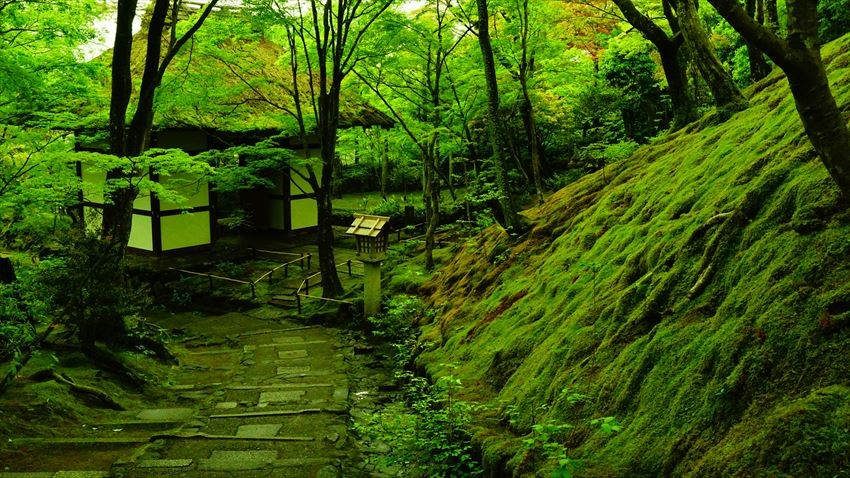
Kokedera (properly known as Saihoji) is a serene temple located in western Kyoto that is home to 120 different varieties of moss. Kokedera means Moss Temple. Its 35,000 square meter garden is part of the Historic Sites and Places of Scenic Beauty of Japan.
What to See and Do at Kokedera
While Kokedera Temple is widely known for the beautiful moss garden that takes up the majority of the area, the most astounding feature is the Ougonchi. This main pond of the temple is shaped in the form of the Chinese character for heart: 心.
On the grounds, you can also find the Shonantei, a teahouse that is a National Treasure. The Karesansui (dry landscape garden) here is also the oldest in Japan, made by MUSO Soseki in 1339. The most important building is the Hondo, which was rebuilt in 1969.
The reason that the Hondo is the most important is that all visitors are required to participate in the religious rituals of the temple, which include: copying sutras, chanting, and zazen meditation.
After you complete the rituals, you are then given permission to walk around the garden area for about 60 to 90 minutes. Some may see this as too strict, but it’s thanks to these rules that the serenity and beauty of Kokedera can be preserved.
The History
Officially named Saihoji Temple, Kokedera is known as such due to the amount of moss in the gardens which provide amazing views you can admire throughout the year. Though it only opened to the public in1926, it quickly became a popular temple for locals and tourists alike.
Originally built as a villa for the Prince Shotoku, the grounds were renovated and revived as a Zen temple in 1339 by the respected priest MUSO Soseki, who was also known as Muso Kokushi at the time.
Though Kokedera was destroyed during the Onin War that devastated much of Kyoto, it was rebuilt but suffered from major floods around the Edo period. It is rumored that it is due to these floods, that moss appeared that gives the temple its nickname home.
Opening Hours, Access, and Admission
Admission to Kokedera Temple is by reservation only. It opens at 10:00 am during the months of July to September. For the rest of the year, opening time is 1:00 pm and visitors to the temple are requested to observe the one-entrance-per-day rule.
Unlike many other temples in Kyoto, permission to visit Kokedera Temple and reserving a time period for your visit can be a lengthy process, so preparation for your visit must be done well before your visit.
To prepare, you will need to make a reservation with the temple at least 2 months before the date that you want to visit. There are also three things that you will need to send within a sealed letter.
These are: a letter with your requested visiting dates, number of visitors, representative name, and address, a return envelope or postcard with the return address and name, and finally an International Reply coupon.
Weekends, holidays, and around June and the autumn season are particularly popular, so if you would like to visit on these dates and times, it is best to send in your request far in advance and to supply several alternative dates in your letter to guarantee a spot.
If your reservation is confirmed, admission to the temple costs 3,000 yen per person and must be paid in cash. You are also required to arrive at least 15 minutes before your reserved time.
The main reason that Kokedera Temple is so strict with visitors is to help curb tourist pollution and to keep the serenity of the garden without disturbing visitors who wish to pray. This policy was implemented since 1977 in order to prevent trash, noise, and traffic accidents from sudden increases of tourism.
Information
- Name: Kokedera Temple
- Street address: 56 Matsuo Jingatanicho, Nishikyo-ku, Kyoto, Kyoto 615-8286
- Access: A 60-minute bus ride via the Kyoto Bus #73 and 3-minute walk from Kokedera, Suzumushi-dera bus stop
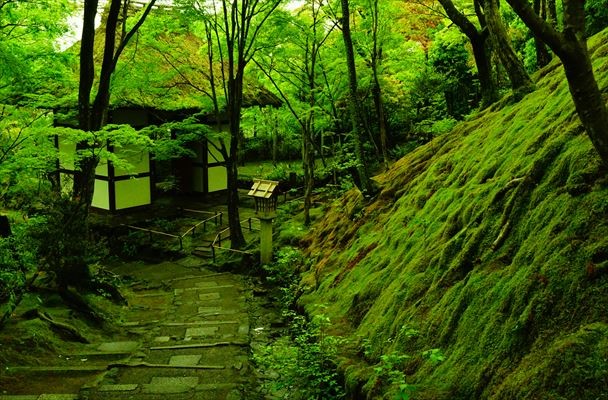

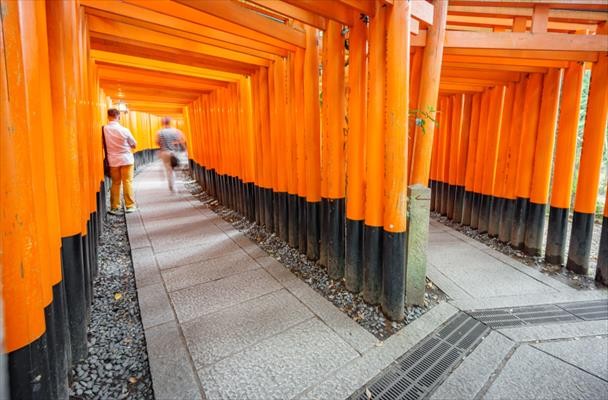

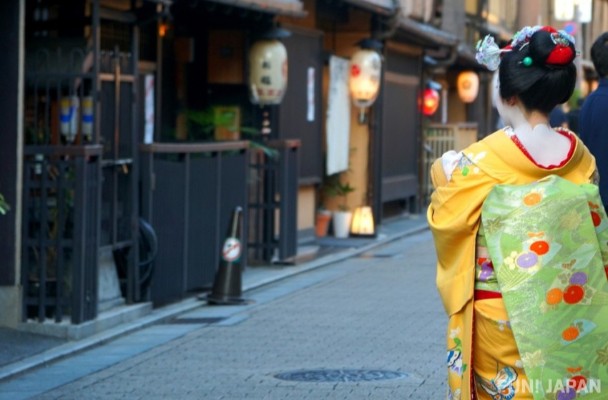
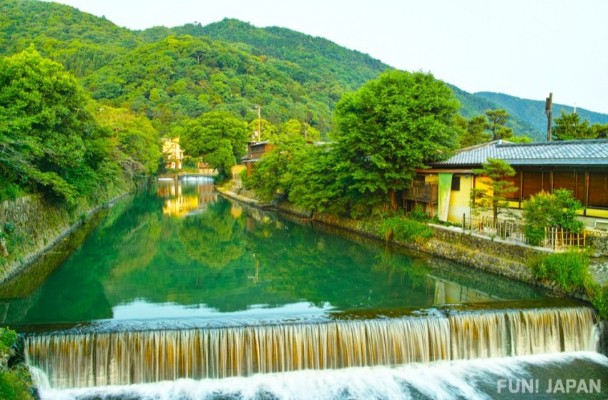
Comments